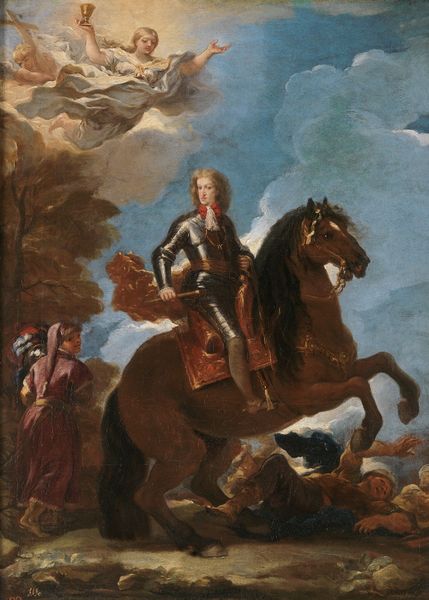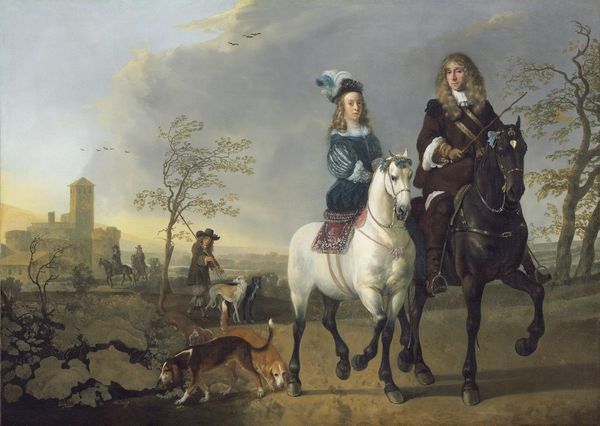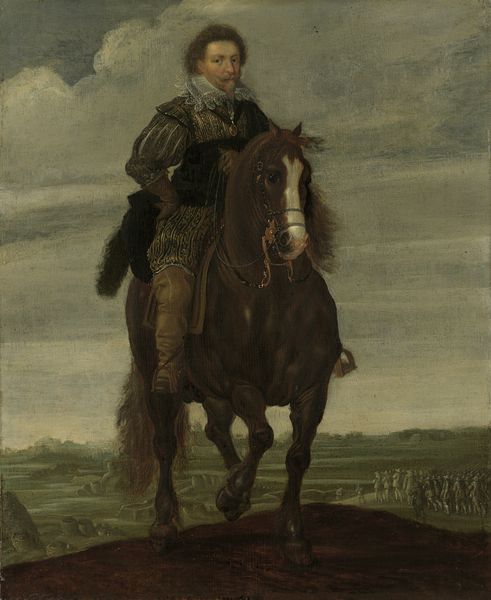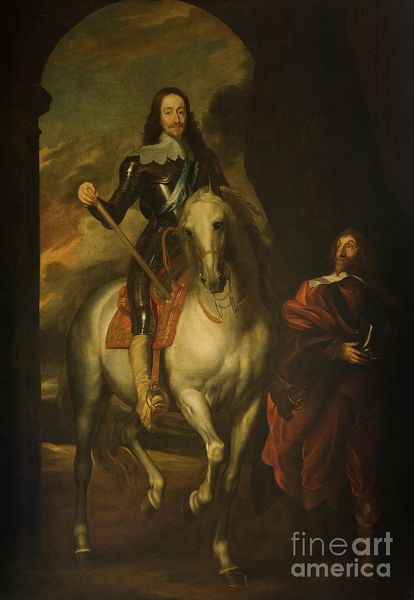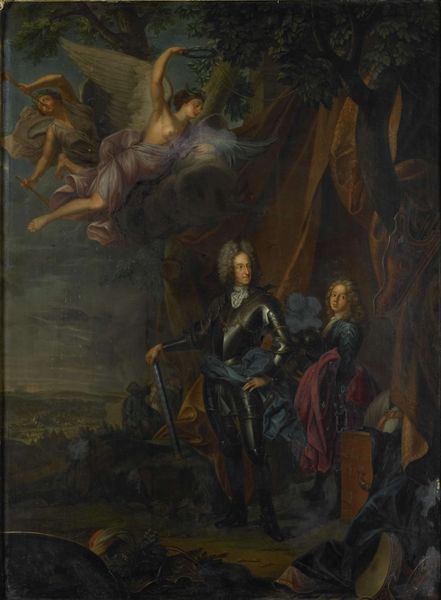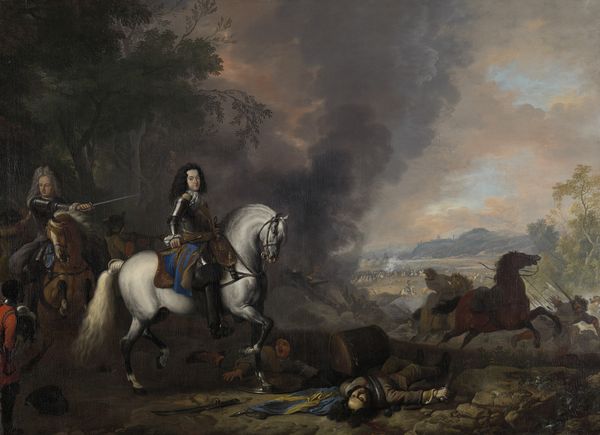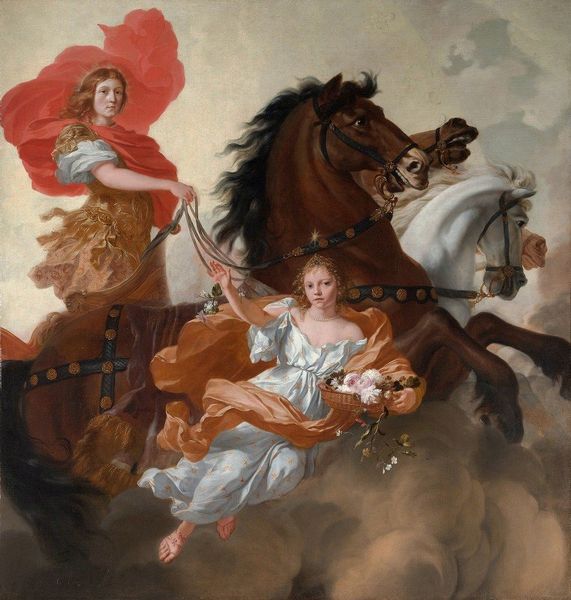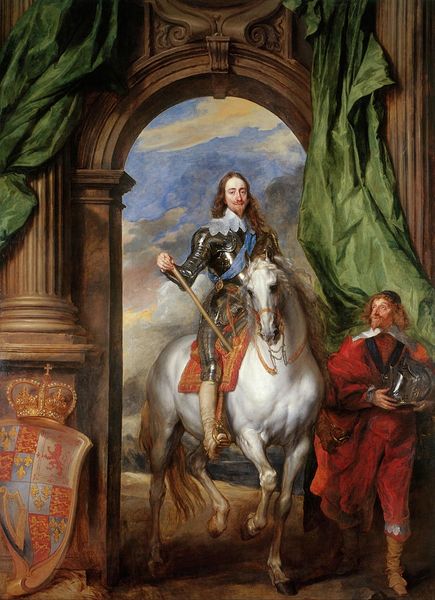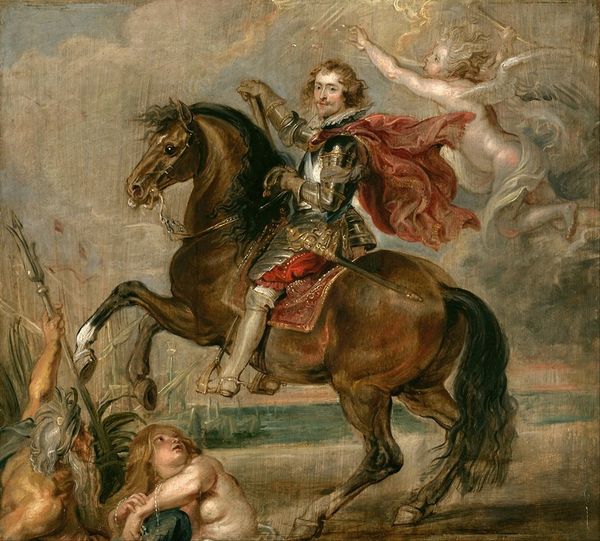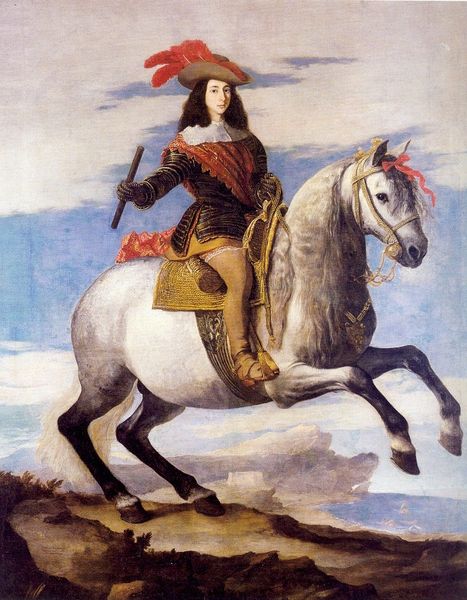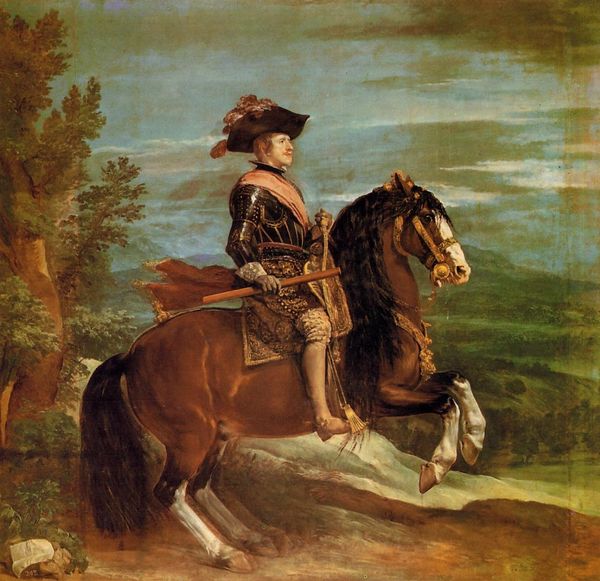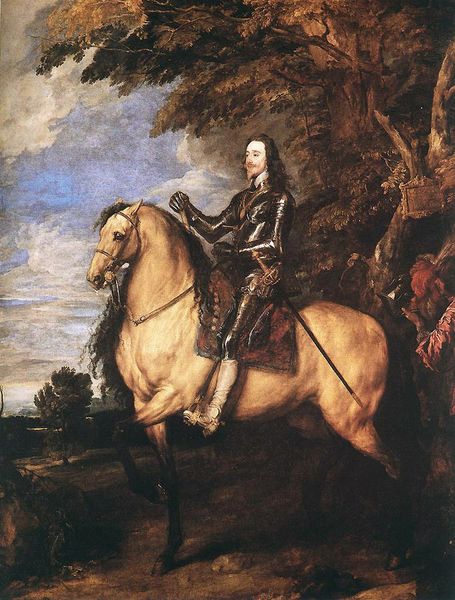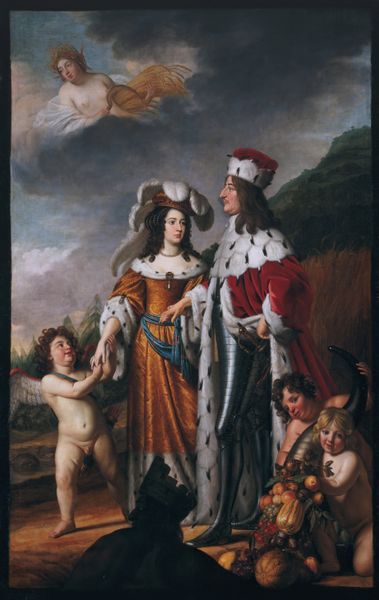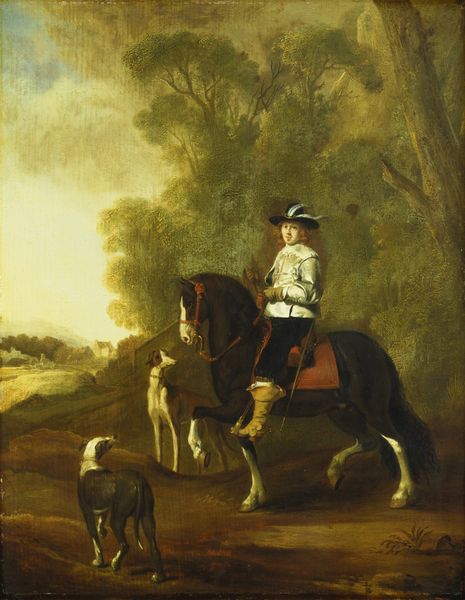
painting, oil-paint
#
portrait
#
baroque
#
painting
#
oil-paint
#
landscape
#
figuration
#
oil painting
#
group-portraits
#
cityscape
#
history-painting
#
erotic-art
#
realism
Copyright: Public domain
Editor: This is Sebastien Bourdon’s “Equestrian Portrait of Christina, Queen of Sweden,” painted in 1653 using oil. The Queen sits proudly atop her horse. I find it fascinating how Bourdon seems to deliberately challenge traditional gender roles in this portrayal of power and sovereignty. What is your perspective on the piece? Curator: It’s a striking piece, isn’t it? What jumps out at me is how Bourdon situates Christina within the political context of the time. We must consider Christina’s abdication and conversion to Catholicism shortly after this portrait was painted. To what extent do you think this portrait, commissioned during her reign, attempts to solidify or perhaps even subtly question her power in the face of potential challenges? Editor: That's a perspective I hadn't fully considered. Perhaps the deliberate androgyny hints at the complexities of her identity and choices? Curator: Exactly. The equestrian portrait itself is a charged symbol. How does Bourdon utilize it here, both to align Christina with established rulers, while simultaneously diverging to assert her individual identity? Editor: The somewhat ambiguous and almost gender-neutral presentation of the Queen creates an interesting contrast with other more traditional depictions. Curator: Indeed. And how does that challenge notions of female leadership within a patriarchal society? Editor: It really underscores how portraits served as tools to shape and control public perception. I’m leaving this discussion with so much food for thought regarding how societal expectations intertwine with artistic representation. Curator: Me too; by considering historical and societal contexts, we are able to understand Christina's complex representation of power, gender and identity.
Comments
No comments
Be the first to comment and join the conversation on the ultimate creative platform.
